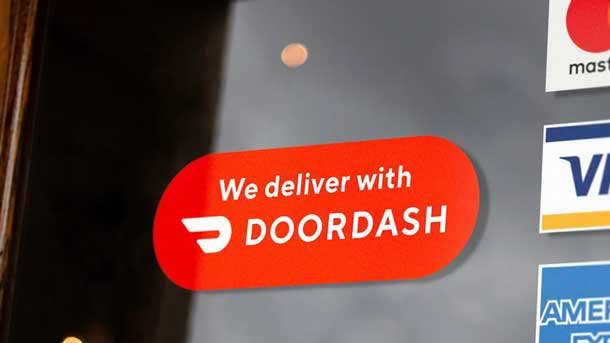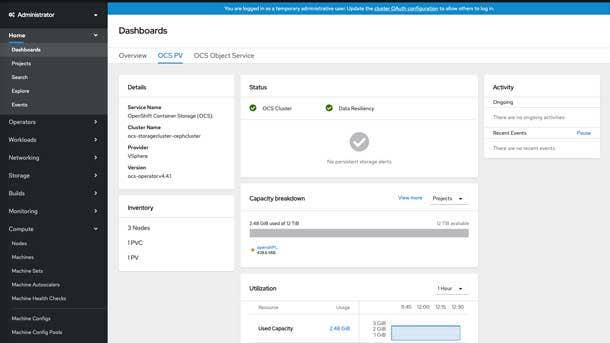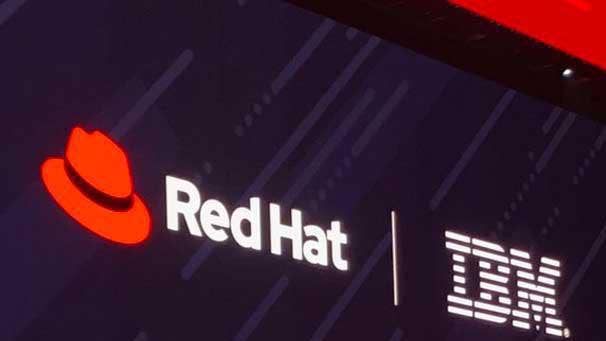5 Reasons IBM Red Hat OpenShift Is Driving A ‘Big Uptick’ In Partner Engagement
IBM Senior Vice President Cloud and Data Platform Rob Thomas, who oversees the IBM software business, says the company is seeing a ‘big uptick’ in partner engagement as it accelerates its Red Hat OpenShift software blitz.

The IBM Red Hat OpenShift Advantage: ‘Waking Up’ The Software Ecosystem
IBM Senior Vice President of Cloud and Data Platform Rob Thomas, who oversees the IBM software business, recently got a call from a software CEO looking for help to take advantage of the multi-cloud Red Hat OpenShift platform.
The CEO was facing pressure from a board of directors looking to ensure the company’s software would run on multiple clouds and had found the only answer was Red Hat OpenShift, said Thomas.
“It’s been a while since I’ve gotten calls like that,” said Thomas. “I think the software ecosystem is waking up to how this is a really good way for them to get a return on their investments.”
The call from the CEO, said Thomas, is just one more sign of the “big uptick” in partner engagement IBM is seeing as it accelerates its Red Hat OpenShift multi-cloud software charge.
The consistent strategy across the broad and deep IBM software portfolio is resonating with partners, said Thomas in an exclusive interview with CRN. “We see a big uptick in partner engagement at this stage because people have realized that having an aligned technology platform strategy like this gives them a lot of leverage on their investments,” he said.
The partners making the big gains with IBM have focused on application modernization with cloud-native architectures, said Thomas.
“The partners that have tuned into how they are going to help customers modernize and get to cloud-native architectures and have built skills with our software are being super successful,” he said. “They are winning deals with customers that have never bought IBM software before. That’s a pretty powerful data point in my mind.”
IBM has also added new incentives across the software portfolio for resellers, systems integrators and ISVs.

Moving IBM Data And AI Lab Services Development Work To Partners
We have always had lab services, which is basically skilled services professionals to help customers with our software. We are moving a ton of that service work to our partners, which we started about four months ago. That is recognition that, as we become more of a technology-centric company, we want the ecosystem to be have the best skills to deliver services around those. So we started making that shift as part of what we do in lab services, which I think is a good step in the right direction.
I have seen a big change in how the partners are engaging, specifically on CloudPaks, but also as you go a little bit up the stack to some of the applications.

Winning New Customers: DoorDash And Planet Fitness
We are winning the kind of customers that we have never won before, and a lot of those are through partners. Companies like DoorDash are now buying IBM Software, and that’s through a partner. Planet Fitness buying IBM software, that is through a partner.
We are getting to a new type of customer, which I think represents the value of the software and what we have built that is new.
Since we have adopted this ecosystem-first mentality, we have found that actually gets us to a lot of the parts of the market that we weren’t before, and I think that is really encouraging.

Picking Up The Pace In Partner Recruiting
This actually is mass recruiting in my mind, but that doesn’t mean we’ll take anybody, meaning we do want them to have the certifications and the skills.
In my mind if we could double or triple the number of partners over the next couple of years, that would be fantastic. This market is big enough and there is enough demand that I think that is certainly possible.
There is a lot of effort in recruiting. We have put additional incentives specifically around areas like CloudPaks and some of the applications that run on those to kind of put our money where our mouth is, and I think that is having a big impact.

Robust App Modernization, AI Ops/Automation And Security Capabilities
Every company has a bunch of applications that they want to be cloud-native, so partners that can pick up things like what we have done with our WebSphere Hybrid Edition, helping customers refactor applications [are going to be successful]. That is an enormous market that is going to play out over the next five years.
AI Ops and Automation is the spectrum from automating a business process to automating your IT operations. That is again a huge market that is [in its] pretty early stages. We are in the second inning of a nine-inning game there.
Most partners I would say have traditionally been in database or data integration or data engineering, but I would say the magic happens when you bring AI into the data capabilities or the integration capabilities.
The need for cybersecurity is nearly unlimited so we are looking for partners that range from working at the endpoint to data security, threat management, all aspects that come from security.

IBM’s Red Hat OpenShift Innovation Advantage
There are three big vectors to the IBM strategy. One is a bet on open technology and innovation. We are building all of our software on top of Red Hat OpenShift. I think we are the only company that is committed to an open-source platform to that extent.
The second vector is a vibrant ecosystem. You heard it from [IBM CEO] Arvind [Krishna], and you’ll hear it from me. I see us doing more than half of our revenue through the ecosystem, which would be effectively doubling from where it is today, and that is happening over I think a fairly short period of time.
The third big bet is around what we call an experiential go-to- market, which is customers want technical salespeople to roll up their sleeves and get stuff working in their environment. So we announced the go-to-market changes earlier this year to deliver that.